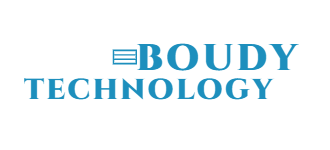“Internet of Things Prospect”… By 2022, IoT will become a service
The era of wired and wireless communication is changing to the era of the Internet of Things (IoT), where all objects and people are connected through a real-time network to collect intelligent information and communicate with each other. An application service industry ecosystem is being formed.
Securing an IoT platform is a key technology for connecting all devices to the Internet in the future, and through this, ubiquitous computing that exists anytime and anywhere can be realized. Changes in social infrastructure and overall industries such as smart grid, environment, transportation, distribution and logistics can be achieved. Context-based resource management, service control engine, and service authoring tools accelerate the creation of new services through the convergence of unit services to achieve more personalized services.
The Internet of Things (IoT) has been a hyped technology for years, but the spread of remote work in the wake of the pandemic and its aftermath has led to real-world use in businesses. Moreover, the IoT is maturing as vendors start selling applications as well as the components needed to build (Internet of Things) on their own.
The pandemic has driven rapid growth in the type of technology where IoT is already widely used, such as predictive maintenance in the industrial sector and automation of ports and transportation facilities. In these areas, IoT reduces the amount of time workers spend in the field. This is because remote monitoring of the system eliminates the need for manual maintenance as often as before. Some functions, such as certain types of inspections and servicing, can be handled remotely, reducing the amount of time workers have to be in the field and close to other staff.
Commercial IoT apps
According to Gartner vice president and analyst Al Velosa, the next big shift in IoT will be moving away from plain connectivity (where hardware vendors sell ways to get data from field assets to the cloud) toward fully integrated applications. What he expects to emerge in 2021 and become the dominant trend in the future is a much more closed business application. Many companies don't just sell IoT platforms. He explained that he now sells applications along with IoT.
Forrester chief analyst Michel Fellino said that integration applications are being sold and deployed at scale, rather than being sold little by little or as test cases as in the past. He said that these IoT initiatives are being realized in a much broader sense, and the key here is that security and scalability must be addressed as enterprises diversify these initiatives.
security issues
Velosa said the growing interest in IoT is also reflected in spending. According to a recent Gartner survey of IT decision makers about emerging technologies, the average funding for IoT is expected to rise from about $400,000 per company in the past 12 months to $600,000 by 2022.
However, security remains a challenge. This is because IoT requires security at multiple levels, including endpoints, networks, and the cloud. Device attacks continued in 2021, showing no signs of slowing down. It is also problematic because different stakeholders have different types of security responsibilities in that the network vendor is responsible for the secure connection, the device vendor is responsible for the physical security, and the cloud vendor is responsible for the backend.
Velosa says enterprises are focused on having security at different levels, adding that these challenges could grow even bigger as broader IoT deployments (and deployments in more sensitive environments) materialize in the near future.
Sustainable IoT Future
But IoT also offers hope for the future, Fellino said. According to him, one of the main drivers of IoT spending in the not-too-distant future will be sustainability. This is in part due to tightening regulatory requirements in many industry sectors. There are many ways to do this in IoT technology, from building maintenance systems, such as turning off lights in empty rooms, to industrial facilities that monitor excessive power use or toxic emissions.
The IoT is what connects these processes and uses the insights to address sustainability in real time, Fellino said. This article was edited by Digital Bizon from an article published by the CIO.


Comments